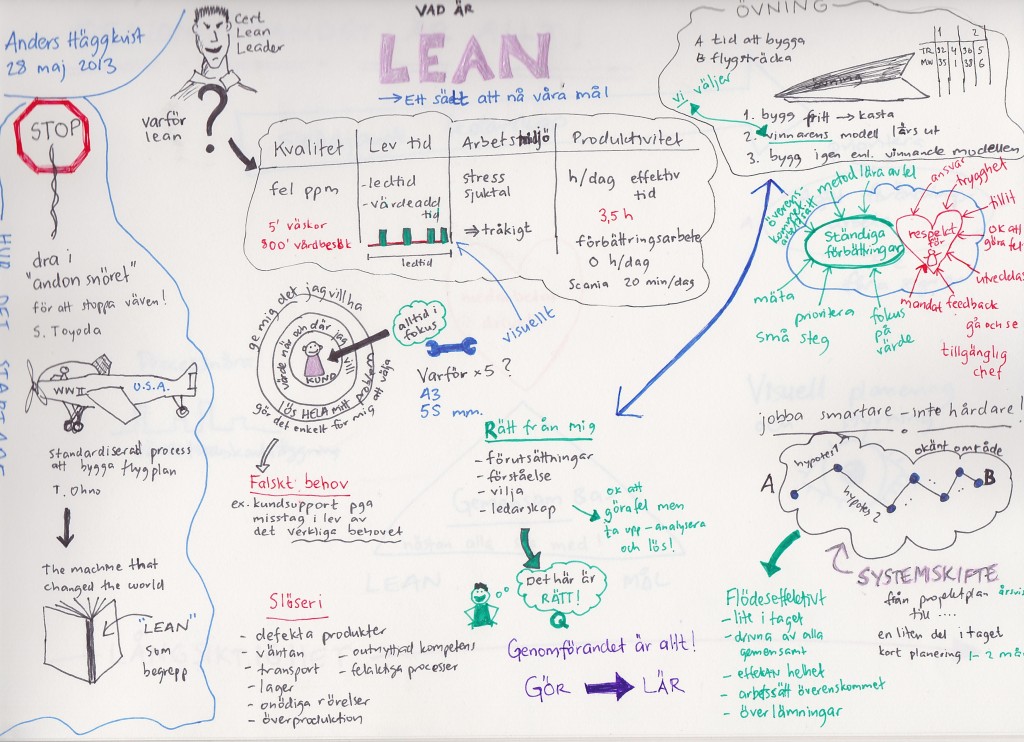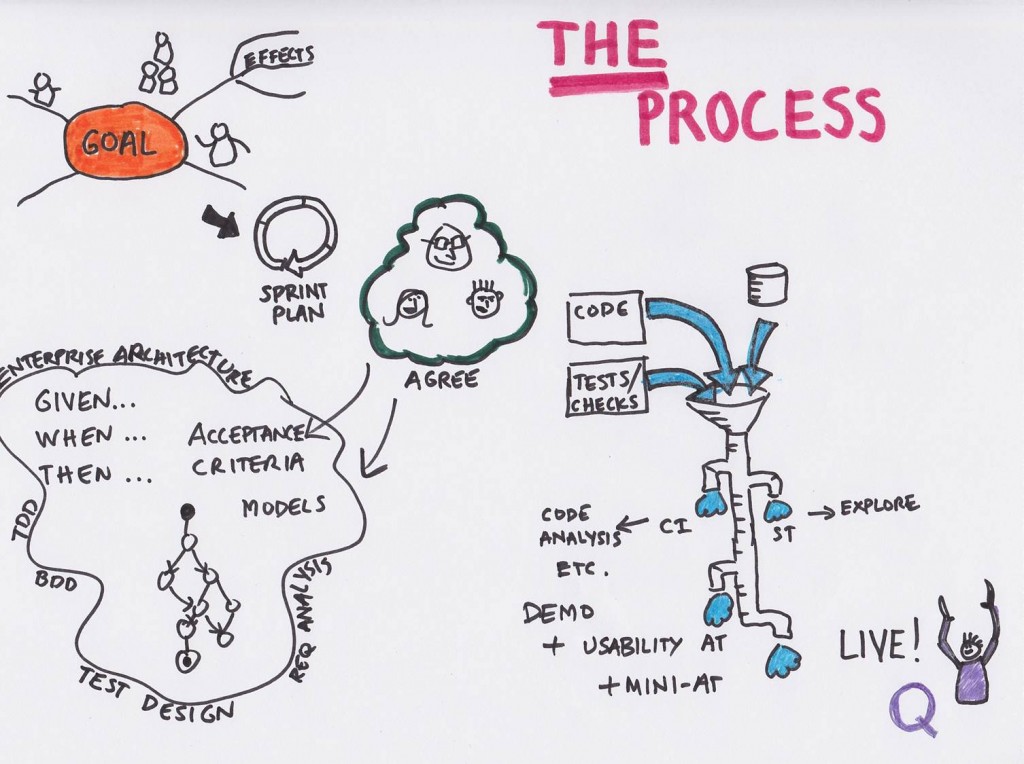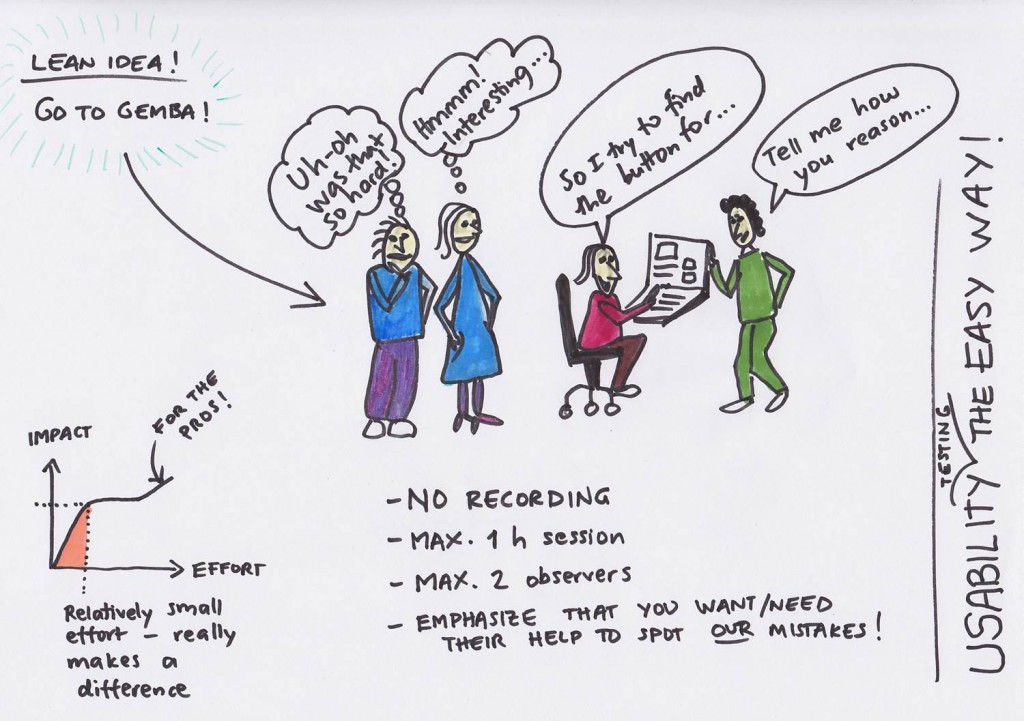Second meeting with my mentor.
Progress?
First question is of course - have we made progress on the tasks we put down in our plan?
Well I have reviewed my CV as well as my linkedIn profile and made sure they are both up to date and that the Lean and management work I have done is clearly stated. Besides that I have written two blog post on getting Lean.
Anders in turn has looked into the possibility for me to participate in som Lean project as soon as possible. One important part is the Lean Box approach that I will discuss more detailed later in this post. I am ready to do some, possibly unpaid work, in order to gain experience.
Why do Lean Implementations Fail
We started out with a discussion on Why Lean implementations fail. A key factor is the view on leadership. The tradition western leadership is hierarchical with more important boss telling less important boss what to do until we reach the simple worker that just do wothout reflecting on why. Sometimes reflecting but beeing told to shut up and work - that has happened to me personally. The Lean thought is quite different. Everybody in the organisation is expected to assume responsibility for what they do in order for the whole team to be as good as possible. So the individual has more responsiblity for Kaizen - continuous improvement.. However most bonuses given out is for the TEAM performing well. No focus on individual excellence at the cost of producing a worse result overall! You cannot really succeed with Lean in the long run if you do not take a look at leadership style and principles.
How do we convince people that Lean is superior? Well, show them tehere is another way of doing things and things can be so much better for them AND for the company. How? Start by doing a pilot and show that it works for real.
What is the Deal with 6 sigma?
I have read at least part of the book Toyota Way to Lean Leadership and noticed that Six Sigma was mentioned a lot of times. I had to ask Anders his thoughts on the matter. Six Sigma is a very detailed process that may work well to impove large, well used processes by analysing statistics on the usage. So most of the work we do is not that well defined, our processes vary a lot and we do not have thise huge amounts of data to analyse! So in most contexts that we work - Six Sigma will not work very well, however for some specific contexts it may work great! Anders mentioned an example with the production of wings for those huge windpowered energy works where larger wings tended to break. By analysing huge amounts of data on materials ised and production methods they were able to identify key factors for building durable wings. That said, most projects we work on have to do with changing the way we work entirely and Lean Box is a much better tool for that.
Lean Box Explained

Here is the short description - this fall I may be skilled anough to tell you a more detailed story.
1: introduction to Lean, getting acceptance from management, agreeing on where they want to go
2: insight/perception: understanding the meaning of Lean. One day lean game with tehory and practice
3. vision: doing value flow mapping for a few selected processes - not too much. From wish to delivery - how much of the time is value adding activities. how much is waste?
4. doing it: 6 weeks sprints. Working on getting a better value flow - reducing waste. Often icludes doing effect mapping
All over this we have the Lean leadership I mentioned before. Changing of attitude from management. Reallise that leadership is different but not in any way diminished in meaning. True Lean companies recognise leaders by their ablities to make individuals grow and thereby adding more value for the team effort.
Improvements must come from the organisationion itself. ALL efforts to impose models on peopel that are not part of the process will inevitably FAIL!
After this coaching session I feel really good. I feel that Anders wants to be a good leader and that a very important task for him is to help me improve!
Also, a lot of the things we talk about I know already and am pretty good at as well (first I wrote God, I am good but not that good :-). I have worked a lot with the mapping of work processes - a large part of value-flow mapping. I love effect mapping - important part of stage 4: doing it.
I have good hopes that I will add value and learn a lot about Lean this coming year.





